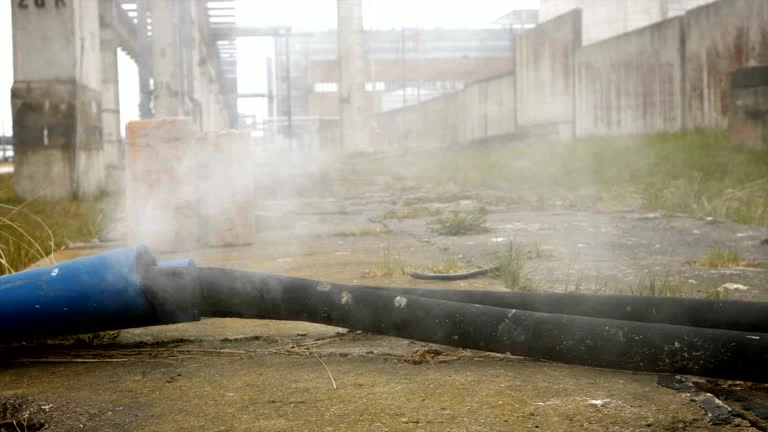In today’s rapidly evolving construction and manufacturing landscape, the demand for polyethylene PE pipe shas surged significantly. This rise is attributed to their versatility, durability, and cost-effectiveness. Central Industries is strategically positioned to meet this growing demand, particularly in the realm of pipe press fittings. In this article, we will explore the importance of PE pipes, the role of pipe press fittings, and how Central Industries is adapting to the market’s needs.

Understanding PE Pipes
Polyethylene pipes are made from high-density polyethylene (HDPE) and are widely used in various applications, including water supply, sewage systems, and industrial applications. Their lightweight nature, resistance to corrosion, and flexibility make them an excellent choice for both above-ground and underground installations.
Advantages of PE Pipe
- Durability: PE pipe can withstand extreme weather conditions, making them suitable for diverse environments.
- Corrosion Resistance: Unlike metal pipes, PE pipes do not corrode, ensuring a longer lifespan.
- Cost-Effectiveness: The installation process for PE pipes is generally more straightforward and less labor-intensive, leading to reduced overall costs.
- Flexibility: PE pipes can be easily bent and manipulated, allowing for creative installations in tight spaces.
Market Trends in PE Pipe Demand
The global demand for PE pipes is expected to rise due to several factors:
- Urbanization: Rapid urban growth necessitates improved infrastructure, including water supply and drainage systems.
- Environmental Regulations: Increased focus on sustainable practices has led many industries to adopt more environmentally friendly materials like PE.
- Industrial Growth: The expansion of industries such as agriculture, mining, and construction has fueled the demand for efficient piping systems.
The Role of PE pipe Press Fittings
Pipe press fittings are critical components in any piping system, particularly when it comes to the installation and maintenance of PE pipes. These fittings are use to connect different sections of piping securely and efficiently, ensuring a leak-free and durable system.
Benefits of PE pipe Press Fittings
- Time Efficiency: The installation process for press fittings is significantly faster than traditional methods, reducing downtime on projects.
- Seamless Connections: Pipe press fittings create strong, reliable connections that minimize the risk of leaks.
- Versatility: Available in various sizes and configurations, press fittings can be use in a wide range of applications.
- Ease of Maintenance: The design of press fittings allows for easy disassembly, making repairs and upgrades more straightforward.
Central Industries’ Approach
Central Industries recognizes the increasing demand for PE pipes and the essential role of pipe press fittings in meeting this need. The company has implemented several strategies to position itself as a leader in this market.
Investment in Technology
Central Industries has invested heavily in advanced manufacturing technologies to enhance the quality and efficiency of its products. This includes:
- Automated Production Lines: By utilizing automated systems, the company can increase production capacity while maintaining high standards of quality control.
- Research and Development: Ongoing R&D initiatives ensure that Central Industries stays ahead of market trends and can innovate new products that meet evolving customer needs.
Sustainability Practices
With a growing focus on sustainability, Central Industries is committe to environmentally friendly practices. This includes:
- Recyclable Materials: The company uses recyclable materials in its production processes, reducing waste and promoting sustainability.
- Energy Efficiency: By optimizing energy use in manufacturing, Central Industries minimizes its carbon footprint.
Customer-Centric Approach
Central Industries believes that customer satisfaction is key to its success. The company engages with clients to understand their needs better and tailor its offerings accordingly. This includes:
- Custom Solutions: Offering tailored solutions for specific applications ensures that customers receive the most suitable products for their projects.
- Technical Support: Providing expert guidance and support helps customers navigate installation and maintenance challenges.
The Future of PE Pipe and Press Fittings
As the demand for PE pipes continues to grow, so does the need for reliable pipe press fittings. Central Industries is well-equippe to meet these challenges through innovation and commitment to quality.
Anticipated Trends
- Increased Automation: The trend towards automation in manufacturing will continue, allowing for more efficient production processes.
- Sustainable Practices: As environmental regulations become stricter, companies will need to adopt more sustainable manufacturing practices.
- Advanced Materials: The development of new materials with enhanced properties will likely change the landscape of piping solutions.
Conclusion
Central Industries is at the forefront of the growing demand for PE pipes and pipe press fittings. With its commitment to quality, sustainability, and customer satisfaction, the company is poise to lead the industry into the future.
FAQs
Yes, PE pipes are recyclable and often made from environmentally friendly materials, making them a sustainable choice for construction and infrastructure projects.
What are PE pipe used for?
PE pipes are commonly use in water supply systems, sewage systems, and various industrial applications due to their durability and resistance to corrosion.
What are pipe press fittings?
Pipe press fittings are connectors use to join sections of pipes securely and efficiently, providing a leak-free connection.
What are the advantages of using pipe press fittings?
They offer quick installation, strong connections, versatility, and ease of maintenance.
How does Central Industries ensure product quality?
Central Industries employs automated production lines and conducts regular quality control checks throughout the manufacturing process.
Are PE pipes environmentally friendly?


















